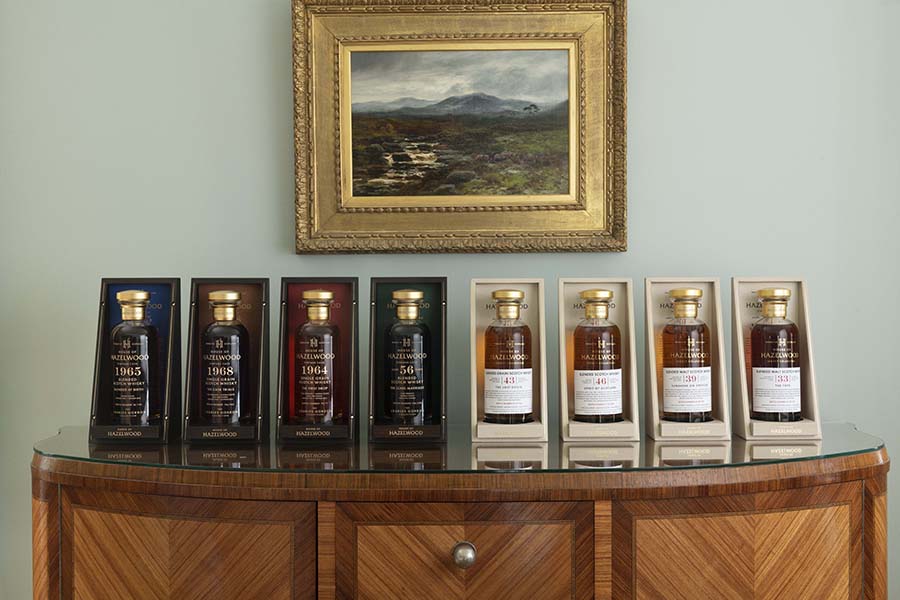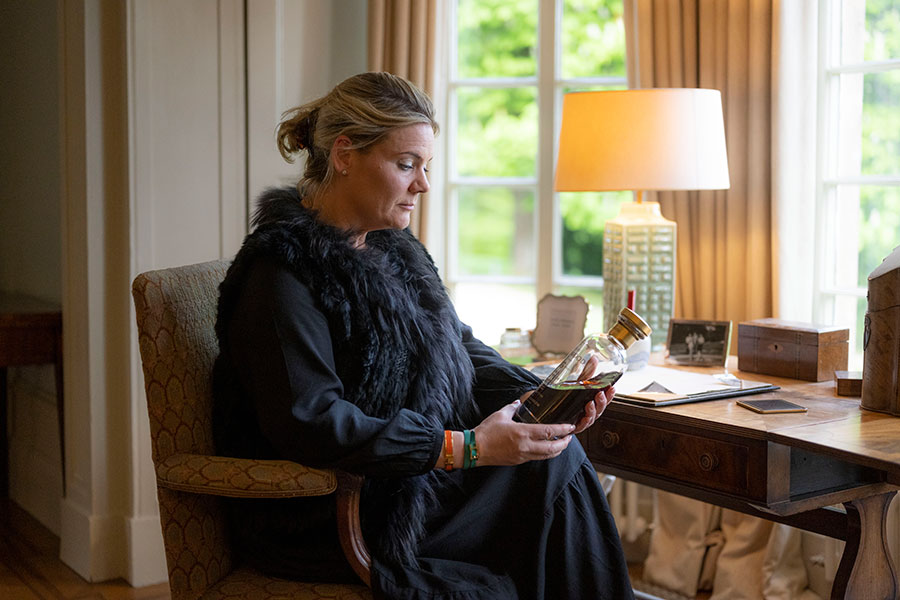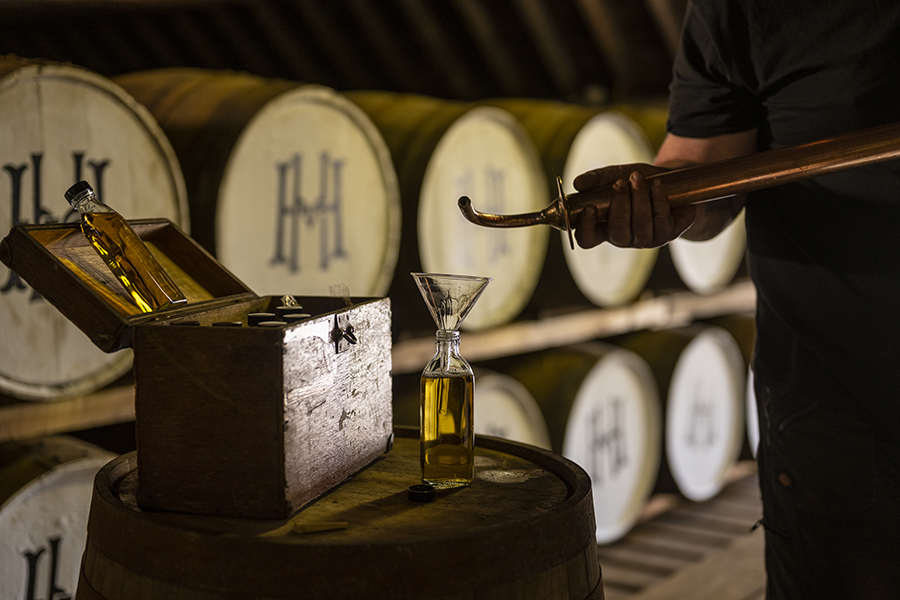House of Hazelwood: A Fifth-Generation Distiller Talks Her Family’s Scotch-Making Legacy

The story of the House of Hazelwood brand of scotch whisky — a wholly family-owned operation — dates back six generations. Photo: Tetra Images/Getty Images
English golfer Peter Alliss once said the best thing about the rain in Scotland is that it ends up as scotch whisky. The Gordon family of distillers has taken advantage of the country’s wet conditions for generations, and this week they’re releasing what they call one of the world’s rarest collections of aged scotch whiskies in Canada, making them available online through the LCBO.
The House of Hazelwood line — a stand-alone independent bottler named after the family’s historic Speyside home in eastern Scotland — includes seven whiskies distilled over seven decades, half of which are blended scotch or blended malts created recently using old stocks (or otherwise blended years ago).

House of Hazelwood director Jonathan Gibson says when it comes to maturity, the stock is ready when it’s ready.
“Unlike most Scotch whisky producers, our business carries with it no requirement to release whiskies of a given age, or a given style on a set date. This is a collection of individual spirits, representing unique casks, trials that have taken place over the years and combinations that may never be seen again.”
Distilled across the country, including at the family-built Girvan Grain Distillery on the South Ayrshire coast, the collection comprises the rarest whiskies from the family’s private stock — considered one of the greatest inventories of aged scotch whisky held anywhere in the world. And now, for the first time, this once private collection is being offered to those outside the immediate family in small, hand-selected batches.
The House of Hazelwood launch includes two collections. The Legacy Collection includes four offerings between 33 and 46 years old retailing for between $3,000 – $4,500. The Charles Gordon Collection boasts three offerings aged between 53 and 56 years old, retailing for $12,000 – $14,000 a bottle.
Zoomer spoke with Kirsten Grant-Meikle — the great-great-granddaughter of company founder William Grant, who now plays an active role in the company — and company director Jonathan Gibson while they were in Toronto this week for several private events to launch the collection.

KISHA FERGUSON: Kirsten, you described the House of Hazelwood inventory as a “bridge between the past and the present.” Can you elaborate on that?
KIRSTEN GRANT-MEIKLE: The whole collection is just steeped in history and tells a story of my family, particularly my Uncles Sandy and Charlie. For 10 years my cousin and I have been thinking about what to do with some of this inventory, because you get to a point where it should be drunk. We’ve never been in a hurry with it. We’re able to bring it to market now in the way that we’ve wanted to do it. So yeah, the time is now.
KF: How has being a family-run business influenced the way that you do business and affected the output of what you produce?
KG-M: Massively. If you’re in the scotch business, you need a couple of things. One is a lot of working capital, and a lot of patience. Our business planning as a family is in 30-, 40-, 50-year cycles. Being 100 per cent owned by the same family for almost 140 years now, we are able to pick and choose what we do with the inventory. We never have to release anything if we don’t feel we want to or we need to. Having that continuous family ownership, going onto six generations now, has allowed us the freedom to do what we like with the stocks. In a lot of instances, we are actually guilty of hanging onto it for too long. Sometimes we don’t like to give it away. It gets quite emotional, as Jonathan can testify.
KF: The price points in your collection are formidable. Are scotch whiskey aficionados buying House of Hazelwood to drink or to collect?
JONATHAN GIBSON: It’s a mix. We’re finding a percentage of our customers are buying two sets of everything and that normally means one for collecting and one for drinking. Some buy three, which is interesting, but not that unexpected. We’ve seen an individual buy 50 bottles of one of the whiskies because they love it and they want to build up their stock so that they have it for the future. They want to gift it to their friends. At the other end of the spectrum, we actually have people of quite modest means who are absolute scotch whisky fanatics who simply have to buy a bottle and they typically buy one or two bottles rather than a full set. So people have quite different motivations.
KF: There still exists a stereotype of a scotch whisky drinker — usually male — dressed in a tweed jacket, sitting by the fire in stone castles or wood-lined drawing rooms with deer heads mounted on the wall.
JG: I think within scotch whisky drinking circles, there’s an increasing number of female drinkers, which goes against that stereotype. There’s a really strong movement within the industry to broaden the demographic and include different groups — non-white groups — who traditionally might not have been associated with scotch whisky in the past. So, I think the industry’s actually really doing a lot to broaden itself out in terms of gender and race.
KF: I remember someone once telling me there are two things a Highlander likes naked, and the other one is a good scotch. Where do you stand on taking it with water or ice cubes?
KG-M: I’m a big advocate for one thing: It’s your drink, take it how you like it. If you actually look at the chemistry, it’s a good thing to put water in it. It releases some of the oils in the whisky so the flavours come out. I’m not sure I’d put a ton of ice into a 50-year-old, but that’s me. It’s your decision.
KF: You mentioned chemistry. What is that magic alchemy that makes scotch such a distinctive and sought after drink?
KG-M: It’s the simplicity of it. It’s just grain, water, yeast, wood influence and time. And patience plays a part. That in itself [has] got some magic around it. There’s nothing added to it. There’s no part, there’s no sulphites, there’s no preservatives, there’s no nothing. I think that’s what gives it its uniqueness.

JG: You take those very simple things and it goes off in any number of directions. And we find examples within the inventory. We have one called Sunshine on Speyside, a blended malt scotch whisky, 39 years old. And it, for reasons that are genuinely inexplicable — our blending team can’t tell us why this has happened — that particular cask of whisky has taken on really riotous tropical fruit notes on the nose and on the pallets; you got mango, pineapple, white grape, there’s no explanation. You can spend a lifetime looking at it. You won’t understand it.
KG-M: We got seven sweet wine casks from France — all the same wood — and we put in some 20-year-old [whisky] to see what would happen. They’ve been right next to each other in our warehouse and they’re all coming out different colours. We’re getting gold straw colours to dark yellow, to pink to some quite dark pink colours. And we have no explanation. A cask is a living, breathing thing and it acts as it will act.
* This interview has been edited and condensed.
RELATED:
Recipes: Drinks and Scotch Eggs for Robbie Burns Day
A Taste of Ireland: Celebrity Chef Recipes and Whisky Pairings
Old School Sippers: 5 Historical Summer Drinks to Keep You Cool